At long last, here is the thoroughly revised and updated third edition of the hugely successful The Art of Electronics. It is widely accepted as the best single authoritative book on electronic circuit design. In addition to new or enhanced coverage of many topics, the third edition includes 90 oscilloscope screenshots illustrating the behavior of working circuits, dozens of graphs giving highly useful measured data of the sort that is often buried or omitted in datasheets but which you need when designing circuits, and 80 tables (listing some 1650 active components), enabling intelligent choice of circuit components by listing essential characteristics (both specified and measured) of available parts. The new Art of Electronics retains the feeling of informality and easy access that helped make the earlier editions so successful and popular. It is an indispensable reference and the gold standard for anyone, student or researcher, professional or amateur, who works with electronic circuits.
PDF
(159 customer reviews)
$39.95 Original price was: $39.95.$19.95Current price is: $19.95.
$144.95 Original price was: $144.95.$24.95Current price is: $24.95.
$39.95 Original price was: $39.95.$19.95Current price is: $19.95.
$129.95 Original price was: $129.95.$22.95Current price is: $22.95.
$39.95 Original price was: $39.95.$19.95Current price is: $19.95.
The Art of Electronics – 3rd Edition
Rated 4.66 out of 5 based on 159 customer ratings
$94.95 Original price was: $94.95.$24.95Current price is: $24.95.
Bought together! Get these ebooks for 20% off
Total: $19.95
- 24/7 support available
- Payments are secure and encrypted
159 reviews for The Art of Electronics – 3rd Edition
Add a review Cancel reply
You must be logged in to post a review.

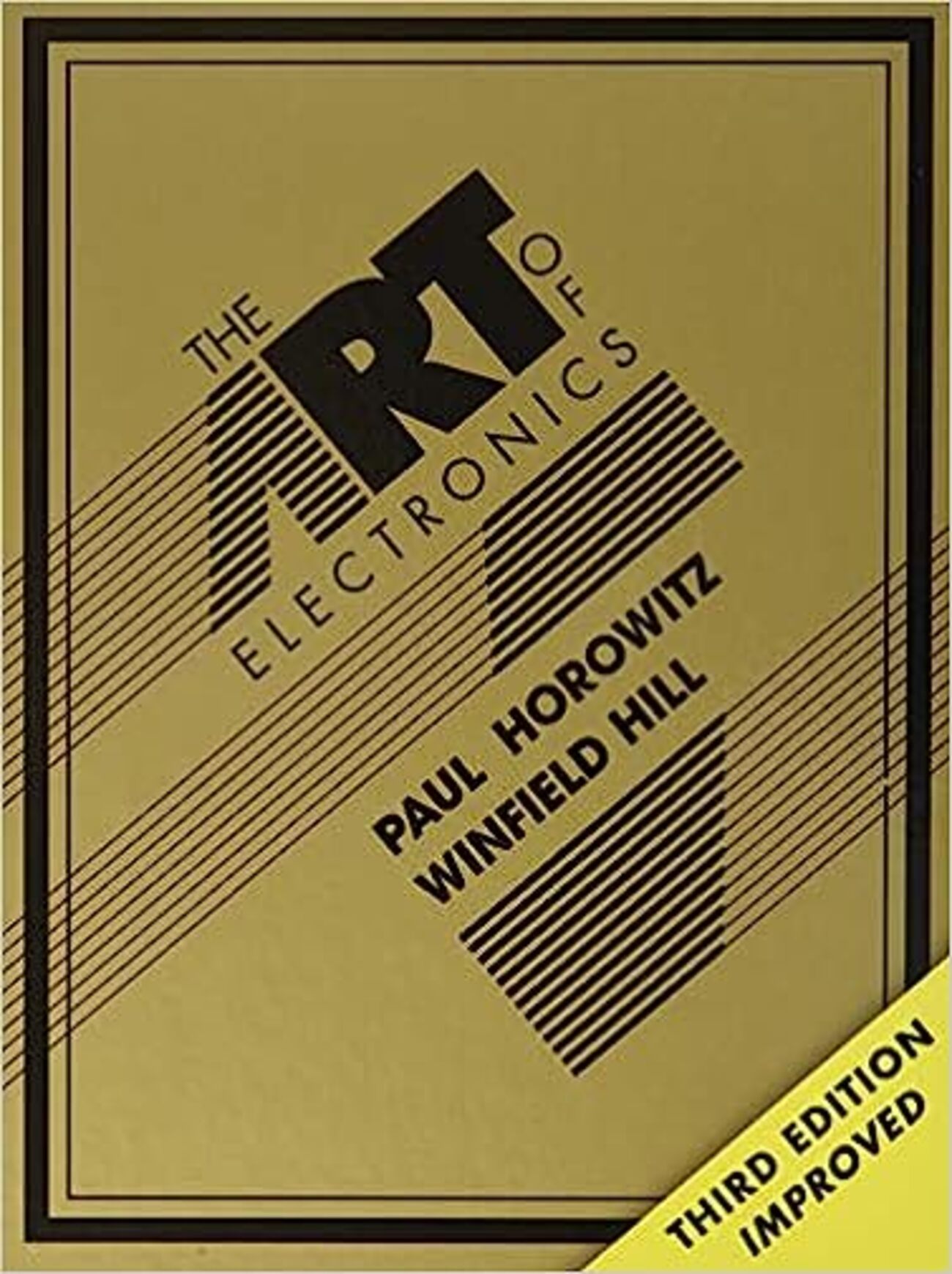
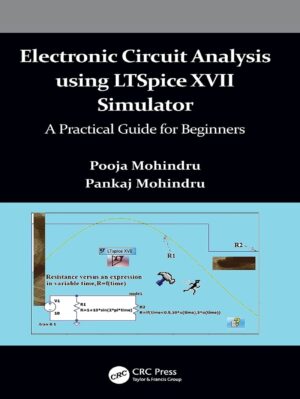
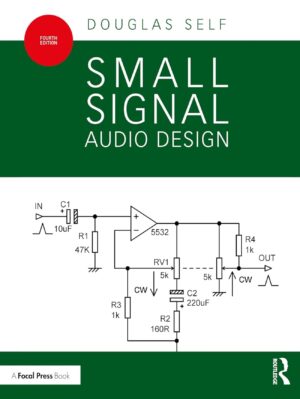
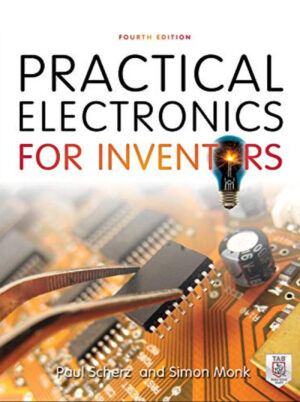
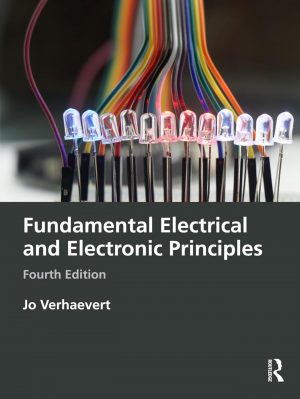
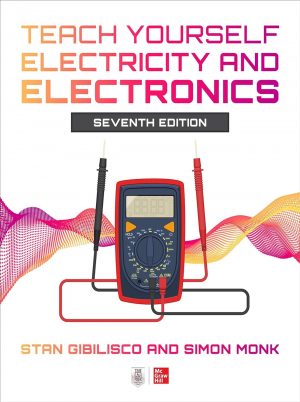
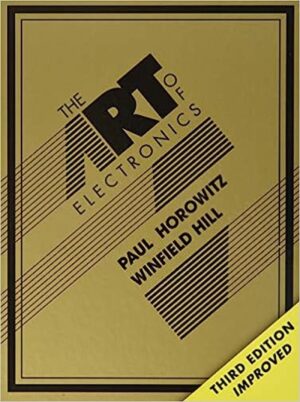
One of my favorite parts about owning this book though is that it has often been quicker, less frustrating, and more illuminating than doing a simple online search when I first sit down to design a circuit. Of course, this statement should be treated with a caveat: I am not a professional electrical engineer. I don't have any educational nor vocational experience in analog electronics, and I'm not designing insanely complicated circuits. Most of what I have learned comes from this book, online forums, and technical datasheets from manufacturers.
Because of this, I would say it is an incredibly beginner friendly text for those designing circuits. It does contain math, uses technical vocabulary, and asks you to read a schematic/graph/table, but these are all well labeled, accurately defined, and clearly depicted. I haven't found myself lost because of a simple omission that the authors felt was too obvious to mention nor a poorly defined or ambiguous term. Needless to say, it sits happily on my workbench full of notes and a couple burn marks from my soldering iron.
I wholeheartedly recommend the book but I'd also recommend you buy it somewhere else.
It introduces new concepts, electrical components well, but then goes very fast and in depth in these topics while not providing enough time to practice, or explain everything covered in more detail.
I will be switching to other resources to learn for now at least, and look forward to revisiting this book once I have a better grasp of the fundamentals.
Maybe I'm dumb (lol) or maybe the teaching style isn't cutting it for me, so this is just my experience. I'll say it again, there's a lot of helpful information in this book it seems, I just cannot process it.
That being said, I was quite astonished to see that there is practically no mention of the PN junction, or to be more precise, the only mention is describing what two flavors of BJTs there are, but nothing what it actually is, how it's created, what are the characteristics, what kind of effect does it have on the device itself, nothing! Not in the diodes section, not in the BJT section, nor anywhere else in the book for that matter. Reminds me of a similar case of one C book where the author was explaining pointers, without explaining the dynamic memory allocation, or the methods used for it. That was as equally a weird thing to read as this is!
Another thing, that is maybe more of a personal preference than anything else, is the two column layout of the pages. Not something one usually sees in technology books (or data sheets) these days. It makes it a bit harder to read, and the schemes, graphs and tables are smaller, and a bit harder to see what's being presented (though some larger circuits do take the entire width of the page).
I just got the book a few days ago, and these are some of the points that I've noticed. I still think the book is worth buying, but just can't wrap my head around the missing PN junction explanation. One would think that that'd be the center topic of a 1200+ pages long electronics book?
This new version, though. I don't know. I think it's basically two old-timers who haven't completely embraced modern technology. They still insist on wasting a lot of words to describe the I/O characteristics of discrete logic chips of the 74xx variety. They also still believe it's admirable to favor through-hole components. (A newbie electronics designer should be counseled to invest in a good microscope and hot-air tools for SMT). They also haven't quite caught up to the reality that designers today send their board designs to prototype assembly houses for quite reasonable cost. These two old-timers still seem to believe that it's a good idea to hand assemble boards on their benchtop. And there's really no excuse to include thumbwheel switches in photos of front panel controls and indicators. Come on guys, for real? Is it even possible to buy thumbwheel switches anymore? No mention of LCD displays? Paragraphs on IDE, SCSI, and GPIB. Again, seriously? Please save the trees and delete that stuff.
Overall, I just feel like this book contains a lot of stuff that would lead a true newbie down the wrong, obsolete roads. As an experienced designer myself, I can take a lot of the stuff in this book with a grain of salt, and dismiss the stuff that I personally feel is obsolete. I'm not so sure that a newbie would have enough experience to separate the wheat from the chaff in this book.
With all that said, I did enjoy the chapter on programmable logic. It was an excellent top level, practical view of the dominant technologies and design entry methods. I also liked the microcontroller discussions. The CPU chapter is also very good (just pretend like the ISA bus conversation doesn't exist).
I thank the authors for their update to the original edition. There's a lot of great stuff in here for older designers with some experience and context. I really can't recommend this book to newbies to the field. I just feel like there's a lot of stuff in here that will lead you astray.
If you are one that is a light reader, I would find other means.
And that's the rub... the authors assume the reader is already well-trained in a certain kind of thinking and, moreover, working in a certain kind of environment, one in which "combining the discipline of a circuit design engineer with the perspective of a practicing experimental physicist" makes sense. The result a book that describes electronic design as a combination of "basic laws, rules of thumb, and a large bag of tricks".
The problem for the raw beginner, of course, is that applying rules of thumb and tricks requires some prior experience or study; otherwise one is simply applying a recipe and hoping for the best. In summary, if you are learning on your own and looking for your first electronics text or you are looking for a mathematics-free way of doing electronics design, it is probably best to look elsewhere as you find AoE to be frustratingly opaque.
If, however, you already know how to work with passive components, use a DMM and and oscilloscope, greek symbols, complex numbers and simple derivatives don't frighten you, and you are willing to puzzle out the formulas and circuit diagrams which fill AoE, you will learn a lot about practical design. The text flips back and forth between presentations of basic circuit theory and practice and practical circuits designed to solve particular problems. To really "get" what is presented, you really should plan on working out designs on paper and building them, too, as you go through the text. The first four chapters, covering passives, BJTs, FETs, and op amps, will give you a sound, practical basis in design and a foothold in deciphering and debugging other people's circuits.
That last bit is, for me, the biggest weakness of AoE's approach to teaching electronics: depending on a collection of rules of thumb and design tricks is a reasonable way to approach design but it may not be quite so helpful in fixing other people's stuff (or maybe even your own designs when they don't work as planned). When you are working in that mode, reading a circuit is often requires more basic principles that are glossed over in AoE's "bag of tricks" approach.
Summary: as a second or third text, or in the context of a guided lab course, or as a reference or refresher for someone returning to electronics, this should be on your shelf. For the electronics newbie, or someone not comfortable with learning a little math, probably not the place to start.
However, in this day and age, it isn't really acceptable that ebooks can't be read on a kindle. I accept this is due to the typesetting, which is complicated in this book. However, I think it is high time books of this ilk modernise and provide flowable formats. There is nothing specifically in this tome that couldn't be re-set.
I only knock one star off because there are plenty of alternative readers (Tablets, Web, etc) that do support print set books like this, so I still get the value from the purchase. But not being able to use my kindle at all is disappointing.
My sincerest congratulations to the authors.
Recomiendo los dos libros de ART Of Electronics a las personas que ya van a dar un paso mas complejo en su aprendizaje o que de plano domina mas las formulas y circuitos complejos. El libro es muy completo, explica todo desde los diferentes tipos de componentes hasta el circuito mas básico.
Recomendado!
P.S. Pour ceux qui seraient tentés par une version française, je le déconseille. En fait, les versions françaises d’ouvrages techniques sont, selon moi, en général à éviter, car elles contiennent souvent des erreurs et contresens. Et quand vous achetez un ouvrage pour aborder un domaine que vous ne connaissez pas et qu’il comprend plein d’erreurs, c’est le meilleur moyen de vous faire perdre pied.
To the beginner, this is an intermediate level book. Though it does start off with basic concepts of voltage, current, resistance, inductance, etc., the underlying tone is that you should have at least some basic grasp of these concepts to begin with. Very quickly it starts diving into somewhat more in-depth discussions on these topics, but it is still kept at a relatively moderate level. My last calculus class was 20 years ago, and while it helps my understanding of what is going on (electronics is full of differential equations, can't really get around it) the way they present the math you don't have to derive the formulas, most of it is boiled down to relatively basic algebra and maybe a little bit of trig. If you want the derivations, they're back in the appendices, but the authors state early on that they try to keep the complex math to a minimum.
I have had the book for about two months and am still on chapter 3, mainly because I find myself having to go back and re-read some passages several times. This is because the book is somewhat sparse with examples, and I'm more of a person who learns by application. I may pick up the companion "Learning the Art of Electronics" which is supposed to be more hands on.
highly recommended, get it for your favourite electro nerd (or yourself!)
As such, I use it in two modes. I occasionally will dedicate an hour to randomly read half of a chapter as it interests me. And sometimes I will look up something specific like op-amp stability. And I'll continue to look up subjects on the internet also.
This books introduction made it sound like not a whole lot of math would be used when in fact this could be used as an engineers reference there's so many equations. I was looking for something that simply explained the operation of different circuits and ended up sifting through a lot of numbers.
In the end of rather have something more thorough for future endeavours than something lacking in detail so I didn't rate this poorly as I'm also not 100% sure who it's specifically designed for.
This book includes insights that are hard to find in an undergraduate text. The authors attempt to teach you without overloading you with irrelevant calculations. The book features plenty of graphs, photos, and equivalent circuits...perfect for an electronics hobbyists . I plan to pour hundreds of hours into this text over the next decade.
I don't recommend that people start there electronics journey here though. Learn the basics, then consider picking this up.
But overall it's very good book
Hey. Also please keep in mind that there was an issue about this book. I was told that there are some fake versions running around. So be careful and check internet about how to detect the fake ones.
If you're able to follow any of the Mims book you'll be able to follow this one. Just be prepared that this goes more indepth and handles hundreds of less common components.
For someone doing basic electronics it's probably overkill (stick with any of the Mims books for that) but if you want to take the next step or have a great reference book this is the one.
I happily owned a first edition until it was destroyed by a flood in 2013. I recently purchased a used second edition and (what I thought was) a used third edition. The third edition is apparently being counterfeited and sold by many "Other Sellers". Beware! The authors' web site details the extent of the counterfeiting and how you can recognize it. Considering how much effort the authors put into writing such an informative book, and how useful it was to me, I felt compelled to return the counterfeit item and am now engaged in finding the genuine article. The "other seller" who sold it to me quickly refunded the purchase amount and apologized for the inconvenience. Hopefully he will return any remaining copies to his distributer with a stern note about this subject.
I would recommend it as a second or third book to accompany another text, such as Microelectronic Circuits by Sedra and Smith. I still have to give it four stars because of how valuable it will be if you are an experienced electronics hobbyist or engineer.
1. A Paperback would be better than a hard one, hardcovers aren't handy and only make sense for books with a big paper area like A3 paper with big pictures;
2. The appendixes are still a missed opportunity, they added the Thévenin's Theorem, 2 pages, but with 2 pages more they could demonstrate how they solve important equations, like in in Chapter 1 - Foundations! For instance, how do you obtain the curve V = A.e^[-t/(RC)] for capacitors charge and discharge, the wikipedia has all that in a single page. Also, the complex numbers solution given for impedance Z stated in the book should be supported with an appendix, because is the trick for solving an equation with integrals and derivatives, very well explained in an Youtube video entitled "13. LCR Circuits—AC Voltage" from the channel "YaleCourses". I mean, what is the point of explaining some calculus and complex numbers in Appendix A - Math Review - without really use them? All this, simple because no book about electronics give this kind of information, so, I expected that this supper book would do just that!
A good example in this book however is the explained formula for resistors in parallel, instead of the easy way that all other books use, the sum of the conductance, it uses the first and second Kirchhoff's rules to do that!
初学者にはアナログ回路設計にはどのような世界が広がっているのかを概観することが出来、
また、ベテランエンジニアには、自分の知識を整理したり、あるいは補足するのに適しています。
微に入り細に入り検証することが主な仕事のアナログ回路設計ですが、著者の実績と経験に
裏打ちされたユーモアとウィットに富んだ語り口調は堅苦しくなく、読んでいて思わずにやりと
してしまいます。といっても、文章は平易な英語で書かれていて、英文のデータシートが読める
人には読みにくいところは無いと思います。
やや褒めすぎかも知れませんが、アナログ回路のエレガンスから泥臭いところまで、なんでも
かんでも魅力的です。私的には第5章の精密アナログ回路の章は本当にわくわくします。
アナログ回路設計を生業とする技術者として、自信を持ってお薦めします。
All I know I learned from other books, and I recently stumbled upon the AoE. How refreshing! I love reading about circuits that I know about in a different, intuitive way.
I can't speak for it as a first book in electronics, but it is a pleasure to read through it and see things from a different perspective.
My knowledge of circuits that I thought I knew, i.e. the integrator or other op amps circuits, is greatly improving thanks to the AoE.
I borrowed a copy from my university library, and ordered one for myself after 3 days of reading.
If you think that this is a book for the beginner only, you're wrong: it gives a lot also to the more experienced engineers.
After a long delay, here comes the 3rd Edition (2015) of a well-known Horowitz & Hill book, The Art of Electronics.
Published by Cambridge University Press.
It's more than 1200 of pages, and more than 2 kg of weight.
Cons:
- quite expensive (e. g., for a poor student; but beware of cheap counterfeit copies!);
- quite heavy (more than 2 kg, handle with care!!!);
- quite a lot of typos (but it depends on the printing revision; please check the "Errata" section on the official website);
- some of the useful tables, diagrams and sections present in previous editions are removed from this one.
Pros:
- heavy weight (yes!);
- nice typography;
- the signature Horowitz & Hill text style (with significant amounts of humor and irony) remains the same;
- new chapters added to describe the modern reality of electronics world.
IMHO, it's:
- a cool, somewhat funny supplementary textbook for electronics-related students;
- a nice reference book for professionals needing to recall some specific details;
- and finally, it's a nice gift for all the AoE fans :-)
Lo que si me ha molestado realmente es que lo compre a 79 y pico Euros, y cuando fui a verle otra vez en la web (2 días después) había bajado a 63.... pero a mi se me cobró 79. Un poco timo.
It is also useful for technicians who would like to be circuit-design engineers. The presentation is readable and decidedly NOT sleep-inducing. The "not" deserves emphasis. The practical circuit examples are golden. Who can read straight electronics theory without falling unconscious?
My only complaint is one that is common to all tomes that cover such a wide range of topics: It's a tome. Being well-stricken with years (and poor eyesight), I find it difficult to manage such a large volume while working out the examples. I would love to see it in electronic form, or, failing that, presented in multiple smaller volumes (with larger print).
Not that I would think of giving it up, even in its current form.
Breaks the material down pretty well in an easy to understand way. It isn't super heavy with equations, they use them where they are needed to calculate out parts, but you won't find seven pages of equations as an explanation of how a component works.
I am currently in my senior year of my undergrad degree in EE and everyone I loan the book to comes back within five minutes totally blown away and makes a statement along the lines of "I seriously learned more in three minutes with this book than I did in an entire semester of electronics".
The guys that wrote this book have been teaching electronics together for several decades in an environment where the focus is on teaching, not research. They understand what it takes to teach students the material and haven't lost touch with what it is like to see this material for the first time. Not to say that this is low level material. It is an amazing reference that is written from a different perspective than the average electronics textbook.
That said -- purchasers should choose a "sold by" vendor carefully. The copy I received is a counterfeit (verified by the real publisher), with poor quality production and assembly, including misspelling one of the authors' names on the title page, and many typos in the Table of Contents.
Obviously this does not cast any shadow on the real book. If anything, it's a tribute to the real book's popularity.
Mi piacerebbe avere le soluzioni ad alcuni esercizi per essere sicuro, anche se da un certo punto di vista non averle ti sprona a sforzarti un po' di piu' a ragionare.
I owned the first edition and read it as a student many times, finding something new every time.
With this updated 3rd edition, party is still going on. You won't stop reading it again and again.
I've always been on the fence between learning EE or ME. I flipped a coin to help aid my decision and got my BSME. Recently graduated, I now have a job designing mechanical systems and I'm good at what I do. Now that I went through college and have some real-world experience I'm pondering having a master's degree. I can either continue what I'm already good at and get my MSME or learn if the grass is greener and get an MSEE. I concluded that I need to work through a few books and really grasp the world of electrical engineering before I make a decision I might regret later.
Knowing that some college text books are grossly over-priced, I looked through a copy of the second edition to see if it's worth the $90+ price tag. I couldn't believe the amount of information this book contains! I was pleasantly surprised that the newest 3rd edition was released only a few months ago as some of the components and graphs from the second edition are a little bit dated. It's going to take me a long time to get through this book, but from what I've seen already this is truly the holy grail of circuit design. I kept my book from my EE101 class in college so I can refer back to it whenever I need to remember how to do some calculations.
I think this text's chief claim to fame is its ability to blend theory with application. Far too many textbooks are designed for use in collegiate courses where an instructor is there to fill in the gaps but this one is an instructor in itself. It provides in-depth analysis of countless subjects lke lots of other textbooks but also provides lots of real world circuit examples and part numbers you can either use directly or use as inspiration to find an equivalent part (say, for example, if the parts are obsolete).
Worth every penny, and that's not something I have said for any other engineering text I've purchased over the years.
If you think you're even remotely interested in Electronics, you need to get this book.
When I go to bed I read 2 hours, and when I wake up next to the book another 2 hours of reading ensues. Then during the day I think about the gems of knowledge this book shares. This book is so amazing, it should actually be a well-kept secret- like a treasure on an island.
Best money I spent this year for sure.
I'm a satisfied customer.
Further, I believe my career in engineering boils down to a few distinct pushes in that direction before it was in my blood (and therefore too late). One of the big ones was getting a copy of AoE 2nd Edition in school.
So, I would have bought the 3rd edtion no matter what.
Incredibly, the 3rd edition has expanded many of the things I loved about the 2nd edition. The section on low noise design is much better and much more useful and it was pretty great before. The digital stuff is obviously much more relevant (although it may not stay that way). The "circuits from the masters" sections and the case studies of specific circuit designs are fascinating and useful (although I do miss the hilarious "bad circuits" sections).
Finally, and most importantly, you can tell that H&H themselves were active engineers in the world between the last edition and this one -- building circuits and solving problems and reading other works and being influenced by the work and scholarship and generally just continuing to rule. The dedication to Jim Williams showed that like me and all other analog nerds I know out there, they had been eagerly reading all his stuff. The section on microcontrollers exactly parallels some of the design ideas, biases, and gut feelings that I and other embedded engineers have taken the past fifteen years developing by plowing through all the exciting architecture and tool changes that have happened from EEPROM PICs to ARMs.
Finally, the intellectual integrity, raw practicality, and HANDS-ON-ness of this book are unparalleled. If everybody were required to read this book before designing circuits, there would be a lot fewer crappy circuits out there.
Oh, yeah. And it's fun, too.
That brings me to my one wish. If ever there was a volume that cries out for an ebook version for easy access via iThings it is this tome. It would be wonderful airline reading, but that borders on physical impossibility. True, my one-volume microform edition of the OED would be more ungainly, but that falls short of a glowing endorsement of the exercise.
So please, gentlepersons at the most noble Cambridge University Press, please take pity on those of us who would like to soak up spare moments with this book, and give us an ebook edition to accompany the physical artifact.
Things you will recognize from the first 2 editions: The enthusiasm for electronics comes through in the writing, the clean descriptions and supreme attention to detail in the quality of the schematics, images, and tables.
As a practicing electrical engineer, I've had the full complement of the usual textbooks which are way more theory and less practical experience. However even today, this book (and it's predecessor) are the ones I reach for to answer a quick question. It's a fantastic tutorial and reference.
I'd recommend this to anyone who already has an interest electronics and wants to learn more. It's a book you will keep around and use for a long time. I am so glad to see the 3rd edition.
I recommend reading the included prefaces (from each of the 3 editions) it's a slice through 30 years or more of the history of electronics.
And a sad note: The authors mention the difficulty of experimenting with tiny surface mount components but offer no solutions. I'm afraid if these two haven't figured it out it may be an insurmountable problem.